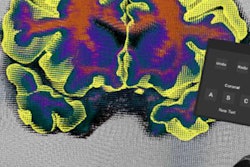
Virtual reality technology may have a wide range of medical applications that extend beyond gaming and entertainment, say researchers from Pennsylvania. Their proprietary virtual reality program, for example, has helped reduce stress and anxiety for cancer patients awaiting radiation therapy.
The group from Penn Medicine in Philadelphia has developed a mindfulness experience program for patients in the waiting room of the health network's Roberts Proton Therapy Center. The program involves having patients use Google Cardboard, a low-cost stereoscopic virtual reality viewer, while listening to a recording and looking at a relaxing landscape. When wearing the virtual reality headset, users are fully immersed in a voice-guided meditation program that runs for less than 10 minutes.
Using the virtual reality program allows patients to leave their thoughts of cancer behind for a short while and focus on something more relaxing as they wait for their treatment, noted Dr. William Levin and Dr. James Metz, chair of the Penn Medicine Department of Radiation Oncology, in a recent release from the health network.
"You can imagine a scenario just like [being on a] ship, where the clouds clear and the waves get more gentle as your heart rate lowers and you calm down," Levin said. "Now we're not just talking about distraction. We're actually talking about this experience being a therapy that reduces stress and anxiety."
Recognizing the effectiveness of the virtual reality meditation program in comforting patients, Metz and Levin decided to open up the service to family and friends of patients waiting at the treatment center, as well as to hospital staff.
The success of their program has led Metz and Levin to prepare other projects using virtual reality technology. They are currently developing software that would allow any individual with access to Google Cardboard and a smartphone to have a virtual tour of the radiation oncology department and learn about the treatment they may undergo at the facility. Users would be able to see part of the tour from the perspective of a proton as it travels from the radiation therapy device into the patient's body.
"Now we can do more than tell patients about what side effects they may experience; we can help them visualize it and provide a greater understanding of why those side effects are happening," Metz said.
Furthermore, the department plans to make its proton training course available through downloadable virtual reality software for physicians and administrators who are unable to attend in person.
"This is the next generation of education, and as technology continues to evolve, it will only help Penn's mission to train the world," he said. "The sky's the limit for what this can do, and we're only just getting started."



















